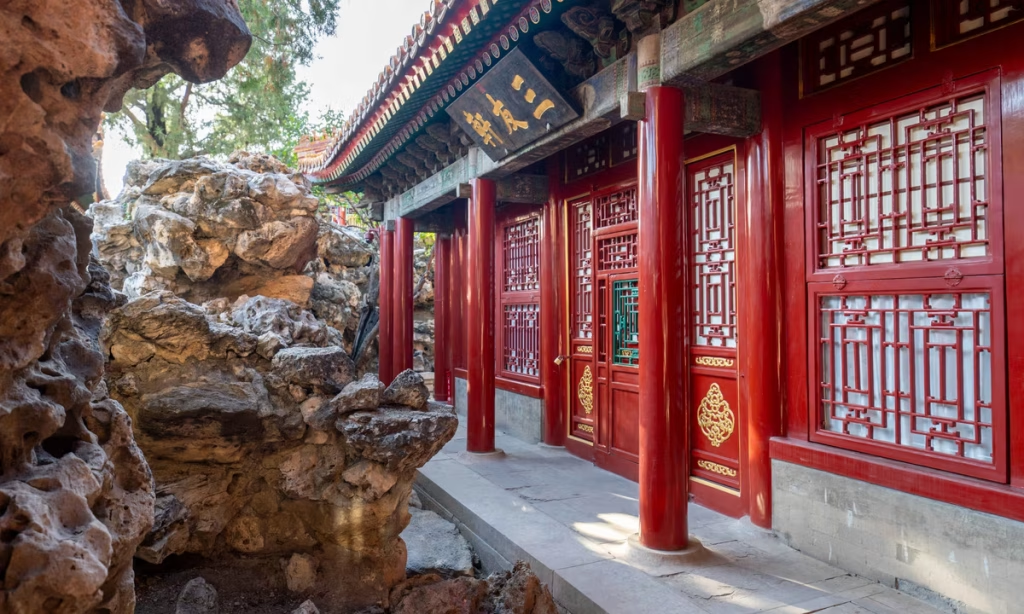The Qianlong Garden in Beijing’s Palace Museum has reopened to the public following a 25-year, $20m preservation project in partnership with the World Monuments Fund (WMF). The restored 1.6-hectare garden was revealed on 29 September, ahead of celebrations marking 100 years since the imperial palace complex—best known in English as the Forbidden City—first opened to the public.
The garden, built between 1771 and 1776, features 27 buildings across four courtyards—with elaborate decorations and furnishings throughout. The buildings are exemplars of 18th-century Chinese imperial design, reflecting a period when the Qing court incorporated European aesthetic influences and techniques such as the trompe l’oeil, introduced by artists such as Italy’s Giuseppe Castiglione. The garden was largely closed off during the 20th century, leaving its original furnishings, finishes, and decorative arts largely untouched.
The project, says a WMF spokesperson, “involved a site-wide conservation master plan that guided phased interventions, preserving original materials and design while ensuring long-term sustainability.” Work began with restoration of the Juanqinzhai pavilion (the Studio of Exhaustion from Diligent Service) —which contains a theatre and reception rooms with rare silk trompe l’oeil murals, intricate bamboo thread marquetry, jade inlays and carved inner bamboo skin—in 2002. That work was completed in 2008, providing a model for the remainder of the site.
A restored interior within the Qianlong Garden
Courtesy of the Palace Museum
Restorers have since focused on a group of specific structures: Fuwangge (the Belvedere of Viewing Achievements), Zhuxiangguan (the Lodge of Bamboo Fragrance), and Yucuixuan (the Bower of Purest Jade).
“Some of the unique challenges [of the project] included preserving delicate finishes, such as rare silk trompe l’oeil murals, historic carpentry, and rare materials like jade inlays and bamboo thread marquetry,” says the spokesperson. “Oftentimes, we needed to recreate traditional materials and techniques that had fallen out of practice. This all ensured historical authenticity while integrating modern conservation science.”
Looking back at history
Also opened in time for the unveiling is an exhibition in the garden’s second courtyard, exploring the garden’s original design and craftsmanship, its history and the process of its restoration. The Meridian Gate Gallery, atop the complex’s main gate, meanwhile, is presenting A Century of Stewardship: From the Forbidden City to the Palace Museum with 200 artefacts selected from the museum’s collection of almost two million pieces. That display has been staged to offer an overview of the palace’s history.
The preservation project is one of WMF’s longest-running partnerships, the spokesperson said, and the organisation’s first major initiative in China. It has also fed into work the WMF has being doing in the country in the years since it began.
In 2011, WMF launched the Conservation Resources for Architectural Interiors, Furniture, and Training (Craft) programme in Beijing, in order to address a gap in professional conservation training in China. Participants on the programme, which has grown to involve students and cultural institutions throughout China, use the Qianlong Garden for hands-on training. To date, Craft has trained over 75 professional conservators, whose work has combined cutting edge conservation science with traditional Chinese craftsmanship.
The WMF spokesperson says that, while it has not worked on other parts of the palace yet, “we are looking forward to continuing our partnership with the Palace Museum through future projects and programmes”.
